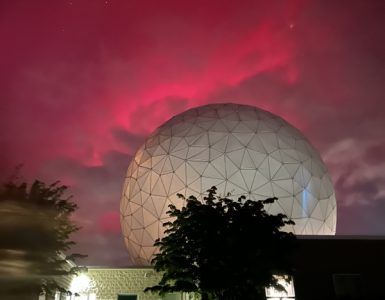by Rhodilee Jean Dolor
Biodiversity is crucial for the health and survival of life on Earth. A balanced ecosystem requires different species with different roles and the loss of organisms can have a ripple effect on the planet. Diversity on the planet is not consistent though. Life on Earth goes through a cycle of boom and bust with organisms blooming every several million years. A new study is now shedding light on one catalyst that enables habitats to flourish.
Tectonic Movements and Booming Habitats
Dietmar Müller, from the School of Geosciences at the University of Sydney, and colleagues compared plate tectonic movements and sea-level changes over the past 250 million years with marine fossil records that were largely pulled from the Paleobiology Database. An analysis of the data revealed that the Earth goes through a cyclical burst in biodiversity every 36 million years.
In their new research published in the journal Proceedings of the National Academy of Sciences (PNAS) on July 10, Müller and colleagues said that this recurring event is due to the movement of the Earth’s tectonic plates, the rigid slabs of rocks that make up the planet’s crust and upper mantle and whose movements cause earthquakes and the formation of volcanoes.
Müller and colleagues pointed at the geological process known as seafloor spreading as a driver of this cyclical boom of life on Earth associated with tectonic movements.
Seafloor spreading happens when the Earth’s mantle pushes tectonic plates away from each other causing hot magma and water to rise and form new oceanic crust. The phenomenon can cause sea level to rise.
A process known as subduction, on the other hand, lowers sea level. Subduction takes place when tectonic plates collide and one plate slides below the other pulling ocean water into the Earth’s mantle.
“When there’s a lot of new seafloor created and destroyed, that’s when you get sea-level highs,” Müller said, according to Live Science. “And when the system slows down … you get sea-level lows.”
The researchers said that the changing rate at which seafloor spreading and subduction occur can explain the cyclical booming of habitats. Still, questions remain as to why these geological processes happen like clockwork.
“There’s essentially periods where mid-ocean ridges go faster and subduction goes faster, and they’re followed by periods when the system slows down,” Müller said. “Why exactly this process is cyclic like that is actually a question that we haven’t fully answered yet.”
In their study, Müller and colleagues observed that over the last 250 million years, marine biodiversity peaked when sea level rise peaked. Their analysis revealed that tectonic movements that drive shallower sea levels every 36 million are correlated with highly biodiverse periods in the fossil record about 6 million to 8 million years after.
“In terms of tectonics, the 36-million-year cycle marks alterations between faster and slower seafloor spreading, leading to cyclical depth changes in ocean basins and in the tectonic transfer of water into the deep Earth,” said Müller. “These in turn have led to fluctuations in the flooding and drying up of continents, with periods of extensive shallow seas fostering biodiversity.”
The researchers explained how higher sea levels historically drive biodiversity. When the sea levels rose, the coastlines got flooded, which created areas of shallow seas that become suitable habitats for new species to thrive. The researchers said that warm and shallow water environments serve as the primary cradles of marine biodiversity.
“We argue that biotic diversity has fluctuated by quasi-cyclical continental flooding and retreat of the ocean, expanding and contracting ecological niches on shelves and on epeiric seas,” the researchers wrote in their study.
Climate Change Also Causes Sea Levels to Rise and Fall
The researchers said that the Earth is now at a sea level low and marine biodiversity low based on the tectonic-driven cycle, but they clarified that the Earth’s geological processes are not the sole factor that causes changes in sea level and biodiversity.
Müller said that climate change causes temperatures to rise and melt the ice sheets which lead to sea levels rising globally. As the planet heats up due to anthropogenic activities, the researcher said that sea level rise and coastal flooding could happen much faster now than what was observed in the 36 million year cycle. This is because the rate of sea level rise documented in the study is relatively slow.
“What we’re talking about is not an alternative mechanism to explain global warming.” Müller said. “[The rates] at which we are changing the climate and the surface environments now are faster than ever in the geological record.”
As mankind continues to emit heat-warming greenhouse gases into the atmosphere, concern arises about the rising seas. In a 2022 report, an interagency task force led by the National Oceanic and Atmospheric Administration (NOAA) estimated how the world’s rising temperature could lead to sea level rise.
“Even on the pathway with the lowest possible greenhouse gas emissions and warming (1.5 degrees C), global mean sea level would rise at least 0.3 meters (1 foot) above 2000 levels by 2100. On a pathway with very high rates of emissions that trigger rapid ice sheet collapse, sea level could be as much as 2 meters (6.6 feet) higher in 2100 than it was in 2000,”’ the NOAA reported.
The study conducted by Müller’s team showed that the rising of sea levels caused by tectonic movements led to a cyclical increase in biodiversity over the last 250 million years. However, higher seas caused by greenhouse gas emissions could have the opposite effect of threatening existing habitats.
Experts have warned that the flooding particularly of low-lying areas such as wetlands and mangrove forests as a result of climate-driven sea level rise can damage habitats and threaten the existence of species of fish, plants and animals.
“Rising seas pose a major risk to our nation’s wildlife,” the nonprofit Center for Biological Diversity reported. “Rising seas and increasingly dangerous storm surges threaten to submerge and erode their habitat, and make the groundwater more saline — killing coastal plant communities and ruining drinking water.”
Hope lies in mankind’s willingness and capacity to limit activities that drive up the temperature of our planet.





